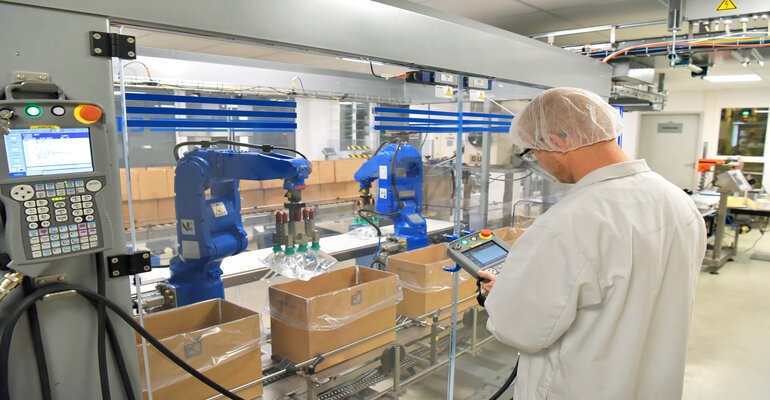Sustainability Drives the Medical Device Packaging Industry in 2023
The medical device packaging industry is coming out of the pandemic’s supply and demand rollercoaster and entering 2023 forecasted for strong, stable growth.

The global medical device packaging market is expected to be grow from an estimated $12,409.8 million to $20,914 million in 2033, surging at a stable compound annual growth rate (CAGR) of 6.1% over the 10-year period, consulting and market research firm Future Market Insights reported. In the United States alone, the medical device packaging industry is booming, projected to surpass an “astounding” $5 billion by 2033, according to the press release announcing the findings.
“This impressive market share puts America at more than [three fourths] of North American's total profits,” the company wrote. “To put this into perspective, Germany — which accounts for nearly 20% of Europe's revenue — will offer approximately $1 billion in incremental opportunity alone.”
Sustainability Drives Growth
The industry’s leaders are employing growth tactics such as product innovation, market expansion into new markets, and strategic alliances and collaborations, according to Future Market Insights.
Jesse Blake, senior director of marketing, product and commercial excellence, Amcor Flexibles North America, wrote in an email to MD+DI that sustainability tops the list of key industry trends. “Demand for sustainable packaging has been talked about for years by medical device manufacturers, however, this need has picked up a lot of momentum in the last 12 months,” Blake wrote. “At Amcor, solutions are currently available for sustainable medical packaging as much of this technology has already been developed for consumer products, which is much further ahead in this journey.”
Industry groups are looking at solutions like the incorporation of polymers derived from advanced recycled processes into sterile packaging, and recycling opportunities like plastics coming out of hospitals, according to Nick Packet, industry vertical manager for the DuPont Tyvek Healthcare Packaging business segment. Tyvek is used in packaging for a variety of different types of medical devices because of its compatibility with commonly used sterilization methods, such as ethylene oxide or radiation with gamma or electron beam.
While US medical packaging regulation is based on FDA requirements, in Europe, what was the Medical Device Directive is now the European Union’s Medical Device Regulation (MDR). “There is higher regulatory scrutiny with this new regulation and new requirements that companies are working to certify their products against,” Packet said. “In Europe, there are also some proposed regulations around the Packaging and Packaging Waste regulation which [hasn’t] been put in place yet… but it does have a drafted requirement to have sterile packaging be recyclable by… 2034.”
As a result, packaging manufacturers and suppliers are moving in the direction of developing mono-material package designs, rather than designs with different types of polymers, he said. Tyvek is made with a lightweight mono-material structure made of certified recyclable high-density polyethylene.
Additionally, there is an increased desire for global product platform solutions from packaging suppliers, Blake noted. “Global medical device manufacturers want to be able to purchase the same packaging materials from a supplier in multiple regions of the world to ease the burden of retesting and qualifications as they bring their product to new markets and/or their manufacturing [moving] from one region to the other,” Blake wrote.
Sustainable packaging solutions can mean different things to different people and, as a result, its definition can get complicated, according to Blake. “Education by the packaging suppliers and the medical device manufacturer is very important as we move forward together,” Blake wrote. “For example, sustainable solutions can come in many ways…fully recyclable, partially recyclable, use of advance recycled resins, reduced carbon footprint, down-gauging, etc.”
Packaging Products Enter New Markets
Like other industry leaders, Tyvek is looking to expand into new markets, including expanding its reach into in-process pharmaceutical applications, including aseptic filling lines in the pharma manufacturing process. Another area of industry growth is in at-home medical solutions and diagnostic test kits, which requires enhanced user-friendly packaging with graphics to attract consumers at pharmacies and big box stores, according to Blake.
“Traditionally, most medical packaging was never designed for consumer appeal or use,” Blake said.
Collaboration Across the Value Chain
The Tyvek Healthcare team also is developing collaborations with industry groups, including the Healthcare Plastics Recycling Council. “[It] is a sustainability focused working group that collaborates across the value chain… working towards [a] common goal of how you drive more recycling of healthcare plastics, [and] broadening it out a little bit now with more sustainability,” Packet said. “There has been a lot of activity in looking at and understanding how you incorporate advanced or molecular recycled polymers into a healthcare package. I think that’s an exciting front, which we are helping to support across the industry.”
Challenges for Packaging Remain
Manufacturers are facing several challenges, including meeting stringent regulations and compliance requirements to ensure the safety and integrity of medical devices, according to Future Market Insights. “Another challenge is ensuring the compatibility of packaging materials with medical devices to avoid any damage,” according to the market research company. “Managing costs while maintaining high standards of quality is also a significant challenge for manufacturers as they strive to produce packaging solutions at a competitive price while meeting industry standards.”
However, lessons have come from pandemic challenges.
“Coming out of COVID-19, there is an intensified need to reduce supply chain risks by adding secondary sources and business continuity plans from current raw material and packaging suppliers to manage future disruptions,” Blake wrote.
About the Author(s)
You May Also Like

.png?width=300&auto=webp&quality=80&disable=upscale)
